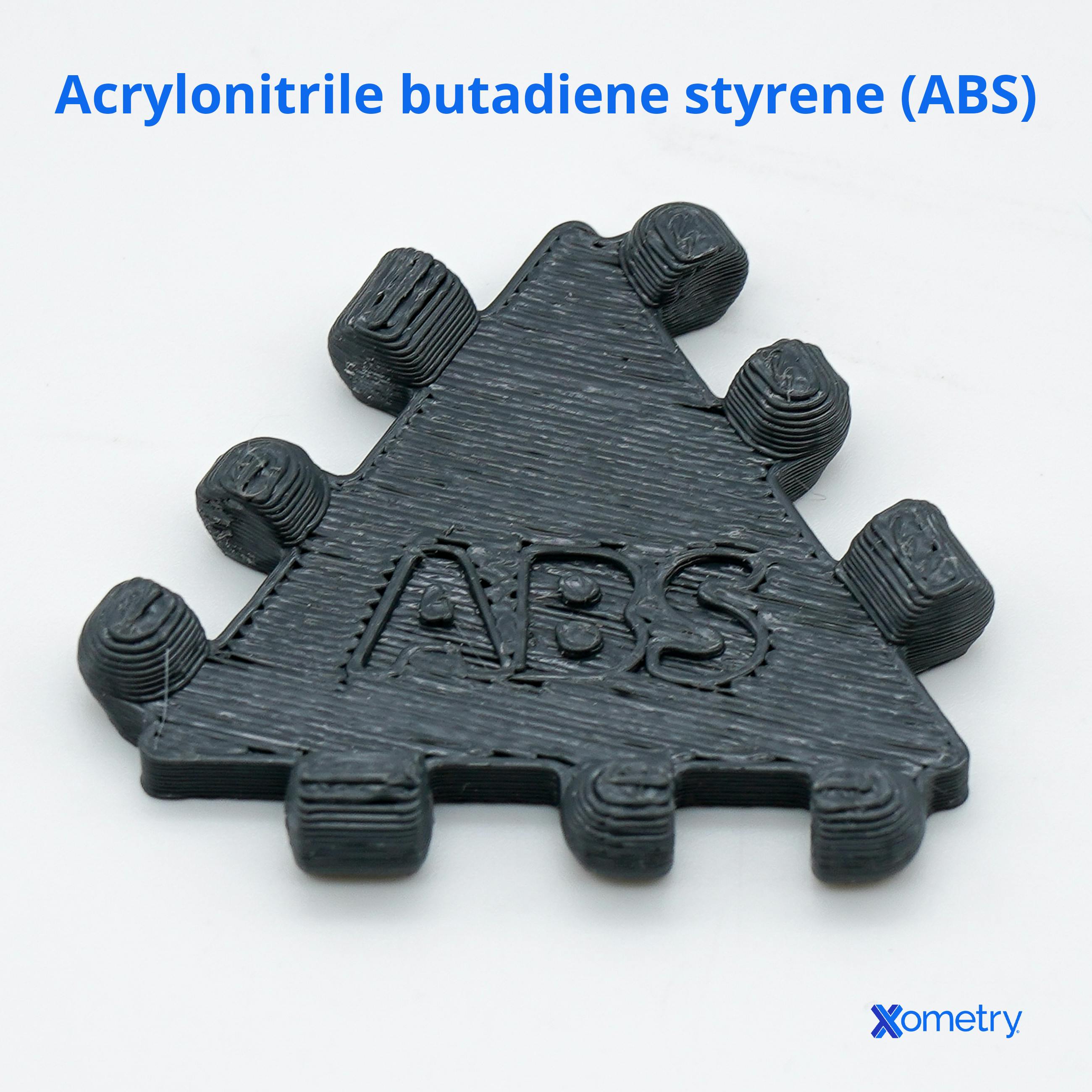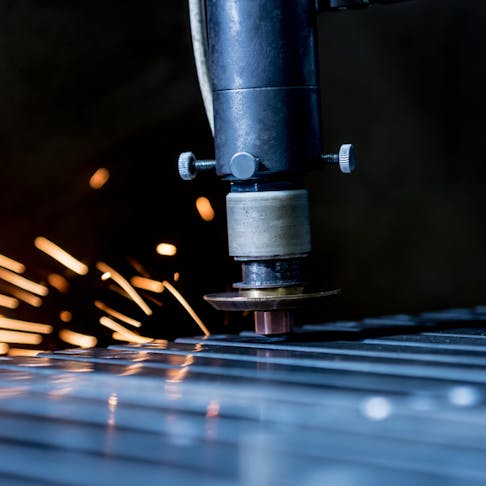Laser cutting is a powerful tool that enables easier, faster manufacturing across all sectors of industry. It is part of the explosion of CAD/CAM, automation, and advanced materials in the industrial revolution. Not all materials, however, lend themselves to this processing method. Some resist, and others offer more dramatic and/or messy outcomes. These bad materials to use for laser cutting are listed below:
1. ABS
ABS (acrylonitrile butadiene styrene) does not volatilize under laser cutting but tends to melt and burn. Cut edges are melted and fused. ABS thermal/oxidative decay products contain a wide range of toxins, including: cyanide, 𝜷 methyl styrene, phenol, phenyl cyclohexane, and benzene derivatives. ABS is also generally considered to be a fire risk because the lack of removal of material by char/volatility leads to considerable local heating and ignition.

2. Epoxy
Epoxy resins (or polyepoxides) are very ill-suited to laser cutting or engraving. The quality of results is generally considered poor and gas byproducts are highly toxic. Though hydrogen cyanide is widely discussed as a byproduct, quality research on “typical” epoxies in thermal degradation lists “H2, CO, CH4, C2H6, C2H4, C3H6 and C3H8, ethane, ethylene, propylene, and propane” and not HCN. However, epoxies are a wide family, differentiated by catalysts and details of pre-polymer manufacture, so HCN cannot be ruled out as a byproduct.
It’s worth noting that polyester resins are sometimes mistakenly referred to as epoxies, while they are chemically unrelated. While polyesters are much more difficult to use, they respond better to laser cutting, so a thorough understanding of the materials you want to cut is central to achieving good outcomes.
3. Polypropylene
Polypropylene is often listed as unsuited for laser cutting. Polypropylene tends to melt and fuse during cutting which results in residues overheating and smoking. However, the smoke is not considered particularly harmful, other than as a mild irritant. A filtered extraction system will usually address this aspect. Cut quality can be improved (and smoking reduced) by effective air assistance.
4. PVC (Poly Vinyl Chloride)/Artificial Leather/Pleather/Vinyl
PVC’s thermal degradation releases chlorine gas and hydrogen chloride once dissolved in moisture. While these damaging and very toxic byproducts can, in principle, be removed by extraction and good quality filtration, the harmful effects on equipment and risk to operators make this material unsuited to laser cutting.
5. Fiberglass
In benchtop equipment, fiberglass is considered a no-cut material. Few, if any, small machines are capable of cutting the glass fiber component well. The (widely used) resins are described as “releasing toxic gases.” Most fiberglass (GRP, glass-reinforced polyester) is not epoxy bonded but uses polyester resins, which are more commonly considered cuttable.
However, polyester resins are a broad family, and much fiberglass material will not be identified easily by resin type. Avoiding cutting fiberglass composites on small and modestly ventilated machines is a good choice.
6. Polycarbonate/Lexan™ Thick (>1 mm)
Thin PC/Lexan™ is practical for cutting. In sections greater than 1 mm, however, melt/fusion and heat-affected zone (HAZ) discoloration (yellowing) is significant. However, higher power machines (in the kW range) are reported to successfully cut PC. The higher power encourages more vaporization and therefore less heat transfer to the bulk, from melt residues. For more information, see our guide on Polycarbonate.
7. Coated Carbon Fiber
Raw carbon fiber cuts moderately well, with a small heat-affected zone, using either a CO2 or fiber laser. Better results, however, are achieved using an experimental hybrid laser that merges the two different optical sources into a single beam. “Coated” carbon fiber refers to pre-impregnated carbon fiber fabric (prepreg) that is ready for thermally induced amalgamation/bonding in a hot press. The pre-polymerized resin impregnation is generally epoxy. The heat/pressure molding/curing process triggers liquefaction of the epoxy precursors and then polymerization to a rigid, thermoset-bonded finish.
The issue in cutting prepreg and cured carbon composites is that epoxy is harder to cut than carbon. There is likely to be a relatively large heat-affected zone that influences the edges of cuts significantly. Uncured laser-cut carbon prepreg will simply not cure well at the edges, leading to a bad molding outcome when cured.
Additionally, the toxicity of epoxies applies equally to coated and cured carbon fiber materials, where the resin is epoxy. Uncoated carbon fiber frays significantly at the cut edges on smaller, low-power laser cutters. This process releases very dangerous fiber fragments that can become airborne. However, the same is true of mechanically cut carbon fiber, so this is not a decisive factor in process selection if you need to cut the material.
8. HDPE/Milk Bottle Plastic
HDPE cuts very poorly. It makes a melted, fused mess and is not considered suitable for laser cutting by benchtop machines. Machines with considerably higher power are likely able to volatilize more of the material, reducing the melting heat transferred into the HAZ. Aggressive air assistance is helpful.
9. Glued Materials
“Glued” is a broad term, and a deeper analysis is required. Plywood is a glue-laminated board made of alternating grain veneers. It is usually bonded with phenolic resin and, because the resin layers are very thin, it generally cuts well. Phenolics release formaldehyde when cut, so good extraction and a carbon filter mask are must-haves. MDF is also a commonly phenolic bonded board, though made of compressed fibers rather than veneers. It is safe and effective to cut, with extraction and a filter mask. Wooden components bonded with PVA (polyvinyl acetate) adhesives are safe to cut. Cyanoacrylate adhesive bonded materials, however, produce severely irritating fumes when heated. Extraction and a breathing mask with closed-eye protection are required. If the glue requires cutting properties that differ greatly from the matrix and is present in gap-filling quantities, it can be hard to find compromise settings that enable both cuts in the same pass.
Benefits of Using Laser Cutting
- The motion of the optical head is achieved using a low-cost machine, fully automated by established approaches.
- Its zero-force cutting results in no localized or general distortion of the materials.
- A narrow cut (and heat-affected zone) means efficient use of materials.
- Unlimited freedom in the complexity of the cut path because there is no minimum radius and no extra cost for extra curvature.
- High precision and repeatability helps with mass production.
- A wide spectrum of materials can be cut.
- An extreme range of thicknesses can be cut cleanly if the correct equipment/methods are selected.
- Fast processing of large numbers of parts in a single sheet means low operational overheads per part.
Xometry provides a wide range of manufacturing capabilities including CNC machining, 3D printing, injection molding, laser cutting, and sheet metal fabrication. Get your instant quote today.
Copyright and Trademark Notices
- LEXAN™ is a registered trademark of SABIC Global Technologies B.V.
Disclaimer
The content appearing on this webpage is for informational purposes only. Xometry makes no representation or warranty of any kind, be it expressed or implied, as to the accuracy, completeness, or validity of the information. Any performance parameters, geometric tolerances, specific design features, quality and types of materials, or processes should not be inferred to represent what will be delivered by third-party suppliers or manufacturers through Xometry’s network. Buyers seeking quotes for parts are responsible for defining the specific requirements for those parts. Please refer to our terms and conditions for more information.


